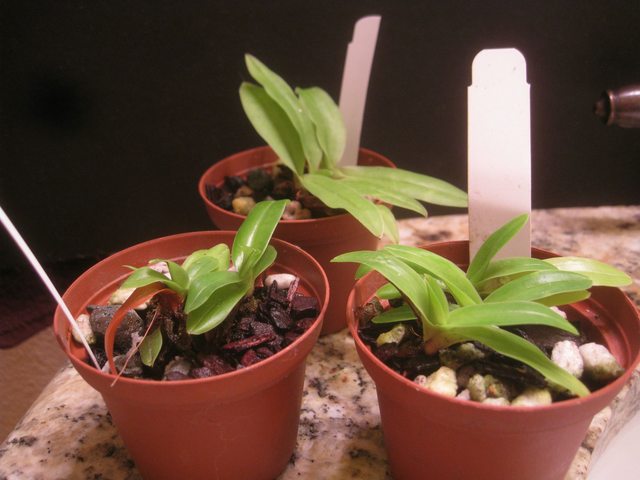Denver
Well-Known Member
I just got three mini compots from Springwater Orchids and need a little advice as this is my first try with anything smaller than a large seedling.
Here they are:

The front two are both Paph. Philippinense album and the back one is Paph. Moquettianum.
The mix they're in appears to mostly be bark, sponge rock, and stone but most of the pictures I've seen of small seedlings on here are in moss. Should I leave them alone or consider replanting them in moss? I grow indoors so my humidity isn't nearly as high as I would like, should I put them in a humidity tent while they're so small and adjusting to the new surroundings? I grow in an upstairs window and it is already starting to get warm down here so I am a little worried about baking them if I tent them...
Any general advice would be appreciated and certainly if anyone has any experience trying to grow small seedlings indoors I would love to hear it. I saw the philippinense album compot for a good price and got a bit excited and bought them before really thinking through if I would be able to be successful growing them.
thanks in advance,
Denver
Here they are:

The front two are both Paph. Philippinense album and the back one is Paph. Moquettianum.
The mix they're in appears to mostly be bark, sponge rock, and stone but most of the pictures I've seen of small seedlings on here are in moss. Should I leave them alone or consider replanting them in moss? I grow indoors so my humidity isn't nearly as high as I would like, should I put them in a humidity tent while they're so small and adjusting to the new surroundings? I grow in an upstairs window and it is already starting to get warm down here so I am a little worried about baking them if I tent them...
Any general advice would be appreciated and certainly if anyone has any experience trying to grow small seedlings indoors I would love to hear it. I saw the philippinense album compot for a good price and got a bit excited and bought them before really thinking through if I would be able to be successful growing them.
thanks in advance,
Denver



